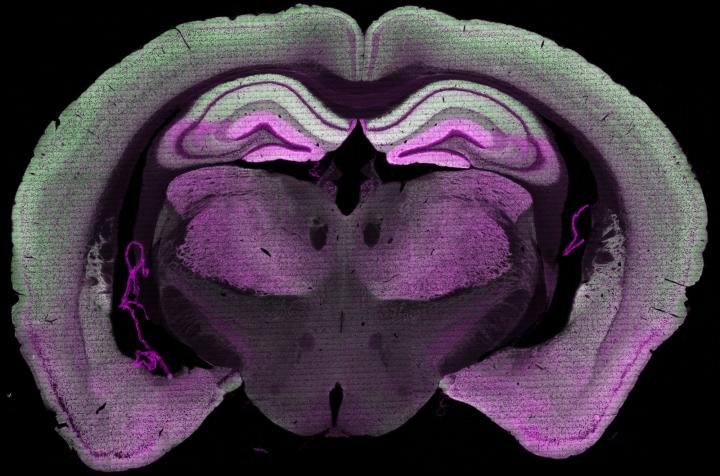Map of a billion synapses reveals clues about how we think
Aug 2018: A new map of more than a billion synapses in the brain helps to shed light on how memories are formed and recalled.
CCBS researcher Professor Seth Grant and team have created the first synaptome map of the whole mouse brain, including more than a billion synapses. Their complex series of images is the first to illustrate how these vital connections are organised and could impact on our fundamental understanding of the brain.
The team studied sections of brain tissue engineered to emit light, allowing the scientists to see individual synapses in colour. By tagging distinct types of molecules in each synapse by colour, they were able to detect a vivid pattern of synapses across the brain. Different groups of synapses were active depending on distinct behaviours of the mice – such as feeding, running and jumping. The diversity of synapse types may be key to recalling information, helping the brain to quickly locate memories through patterns of its activity. This finding could help scientists understand more about how memory problems develop.
The study also showed that mice bred to mirror aspects of autism and schizophrenia had altered synaptome maps and did not recall information properly. This could open new avenues towards understanding many different brain diseases and behavioural conditions.
The study was funded by the European Research Council and Wellcome and is published in the journal, Neuron.

There are more synapses in a human brain than there are stars in the galaxy. The brain is the most complex object we know of and understanding its connections at this level is a major step forward in unravelling its mysteries.
In creating the first map of this kind, we were struck by the diversity of synapses and the exquisite patterns that they form. This map opens a wealth of new avenues of research that should transform our understanding of behaviour and brain disease.
Related links
Read the scientific paper in Neuron: Architecture of the Mouse Brain Synaptome; doi.org/10.1016/j.neuron.2018.07.007
Professor Seth Grant's profile
Synaptic biology and disease research in the Centre for Clinical Brain Sciences


